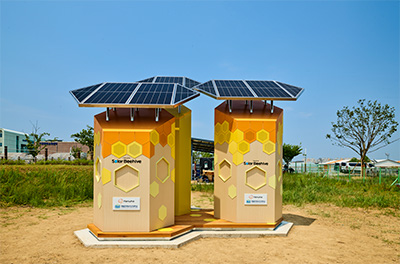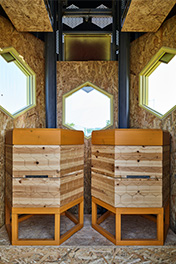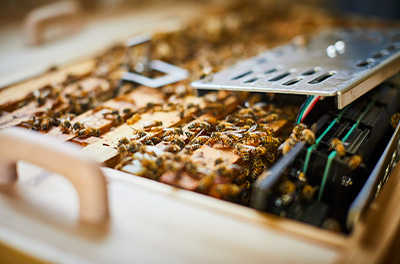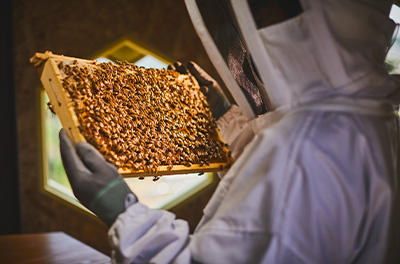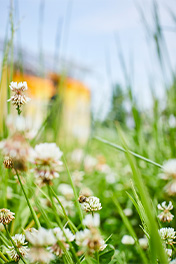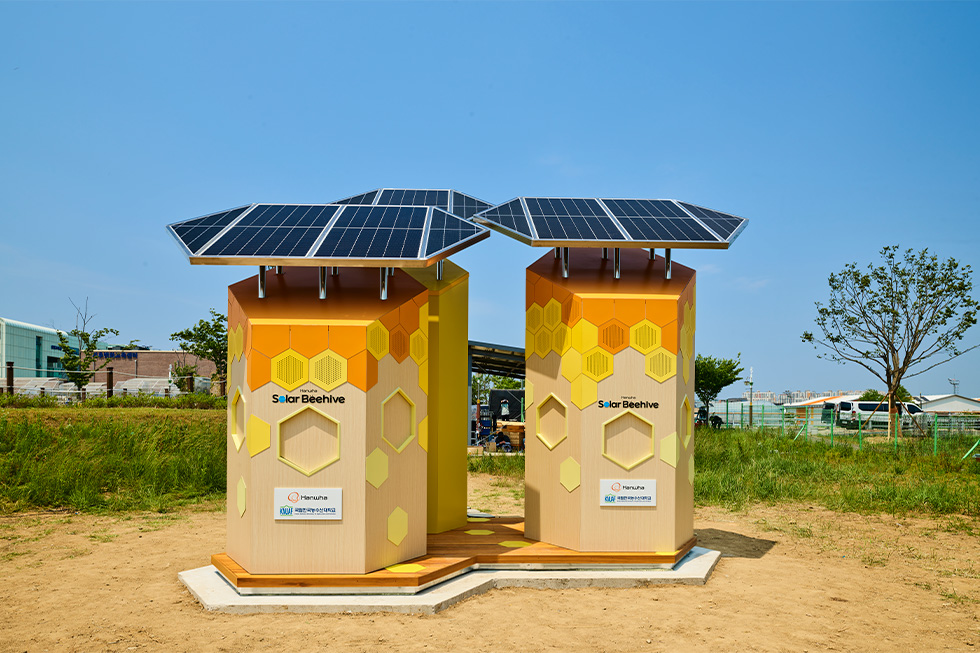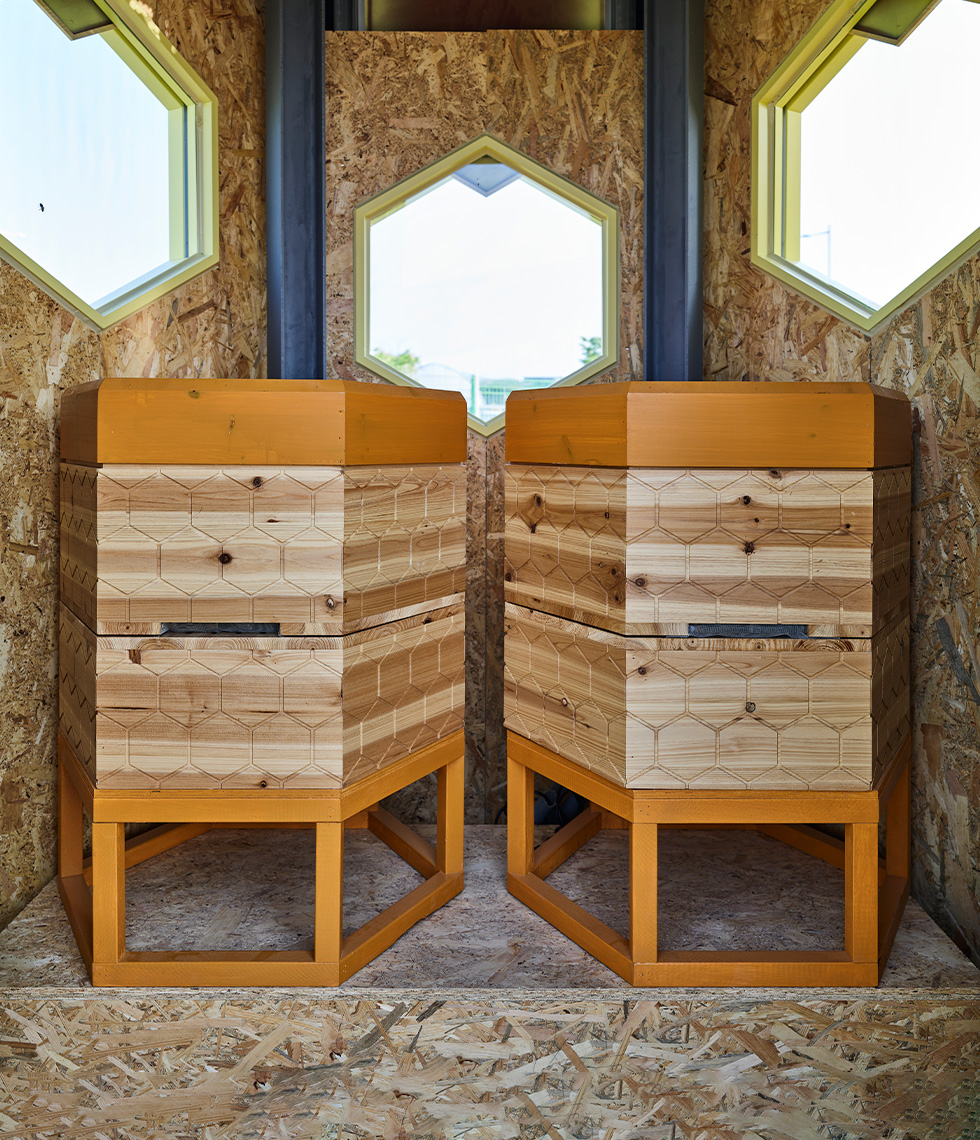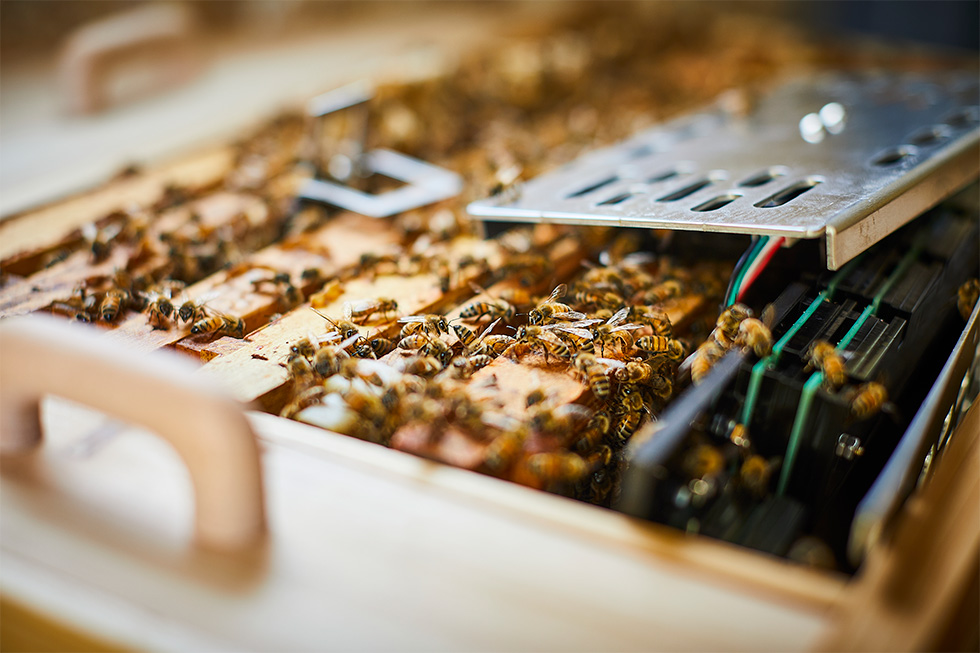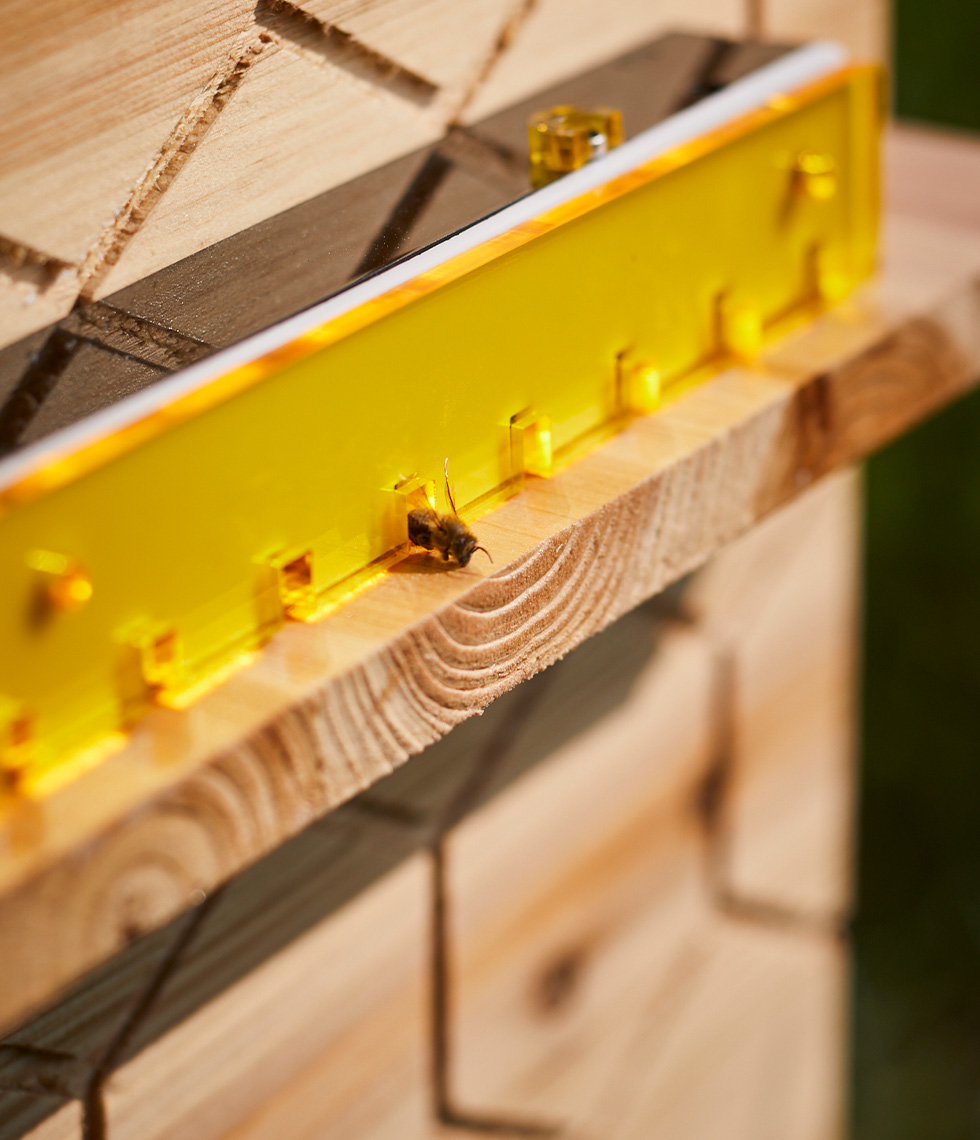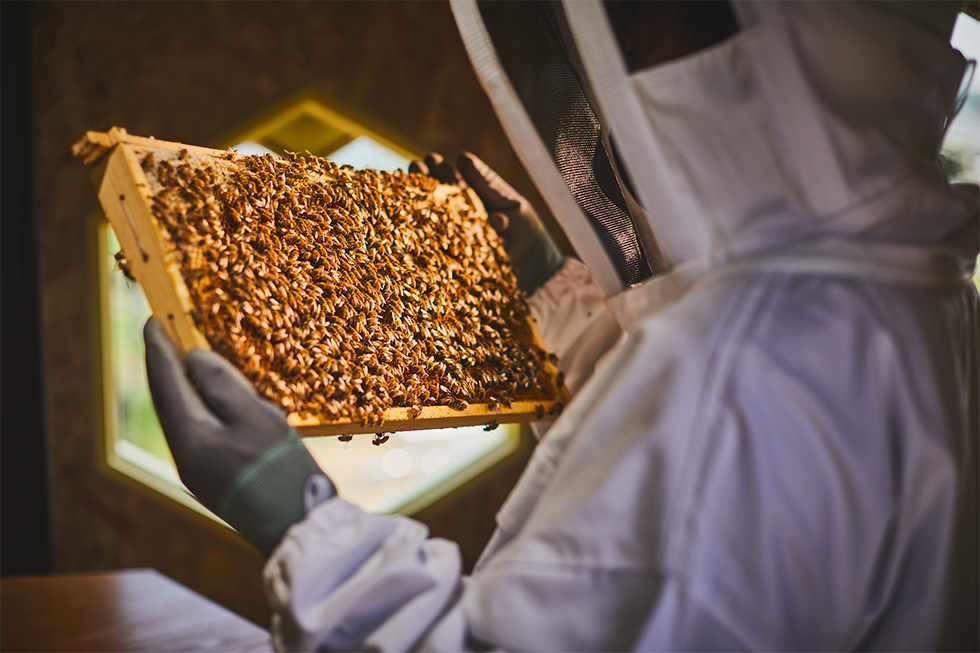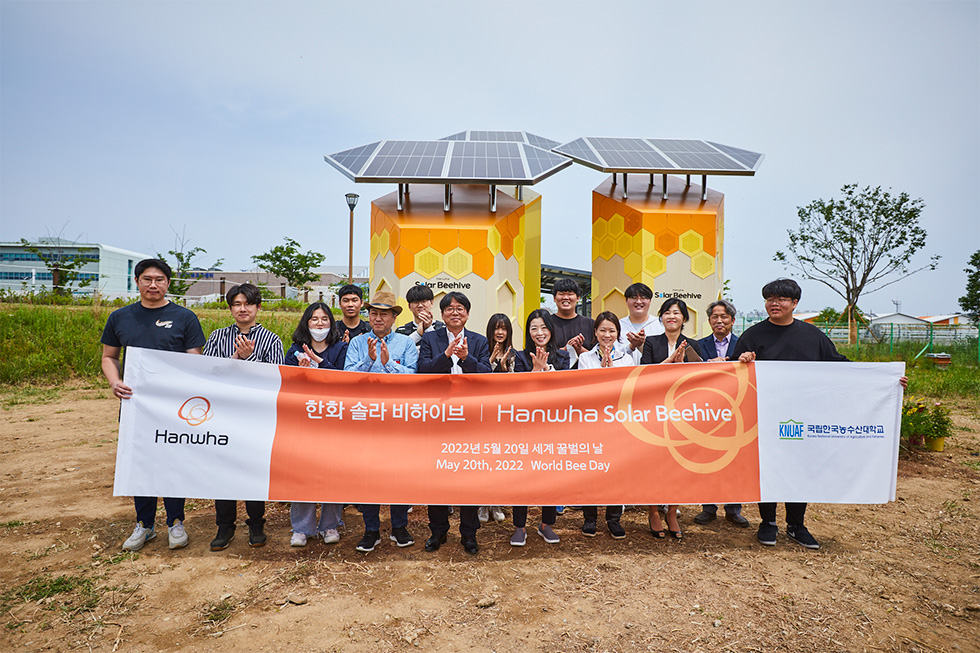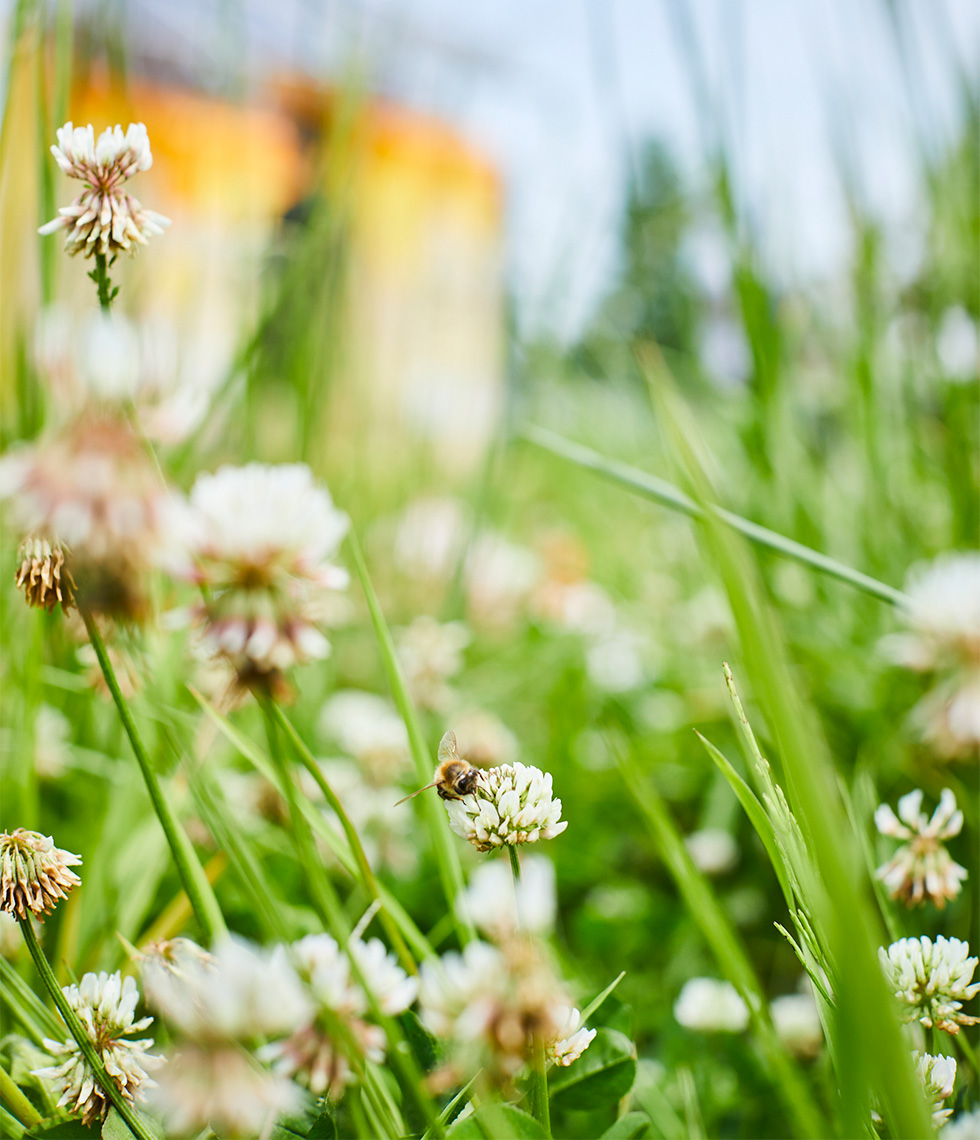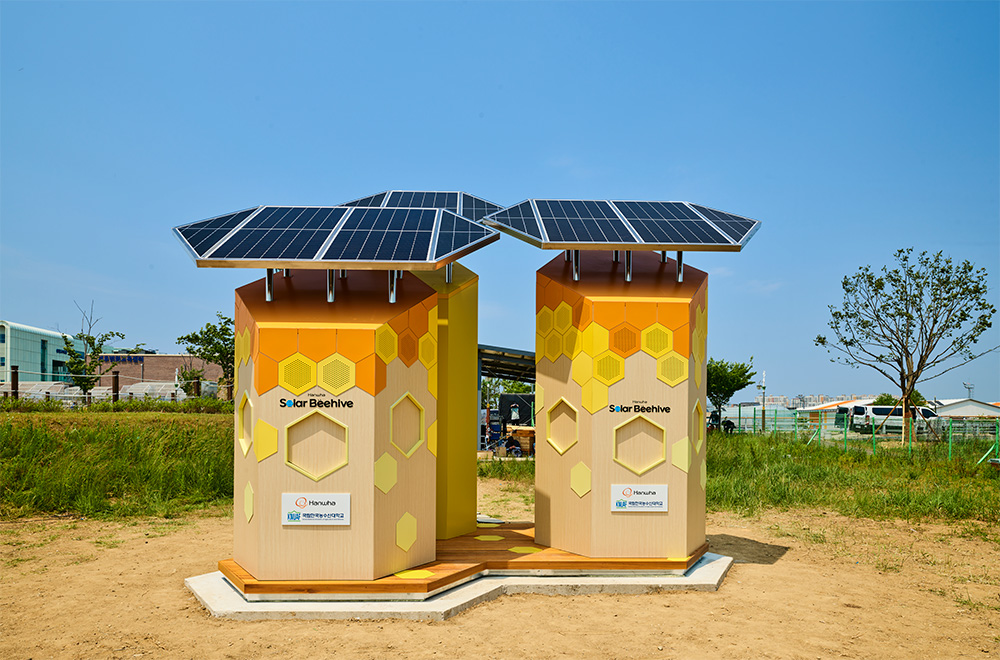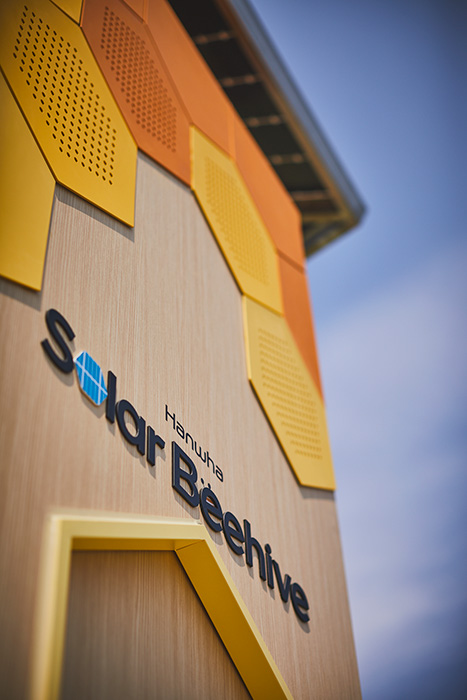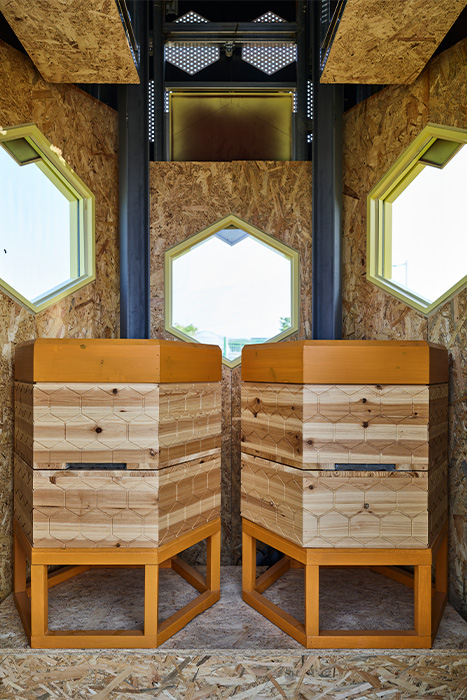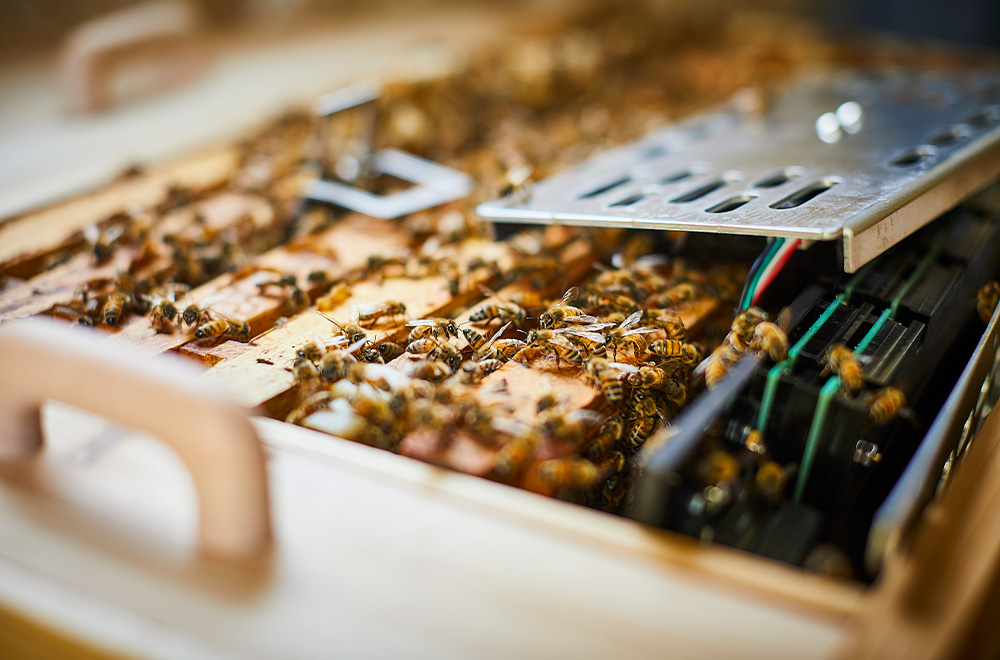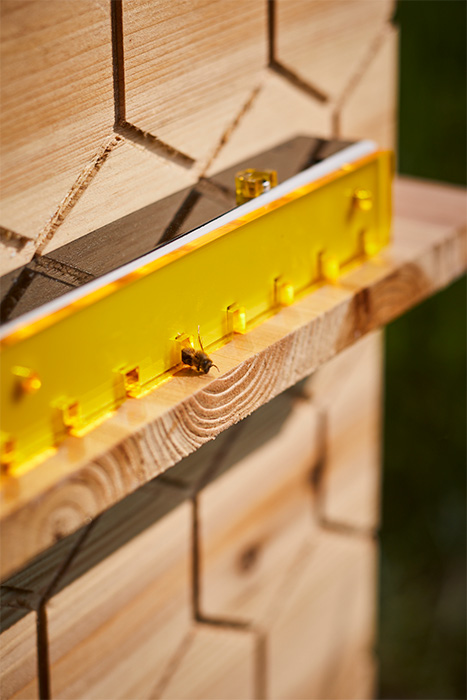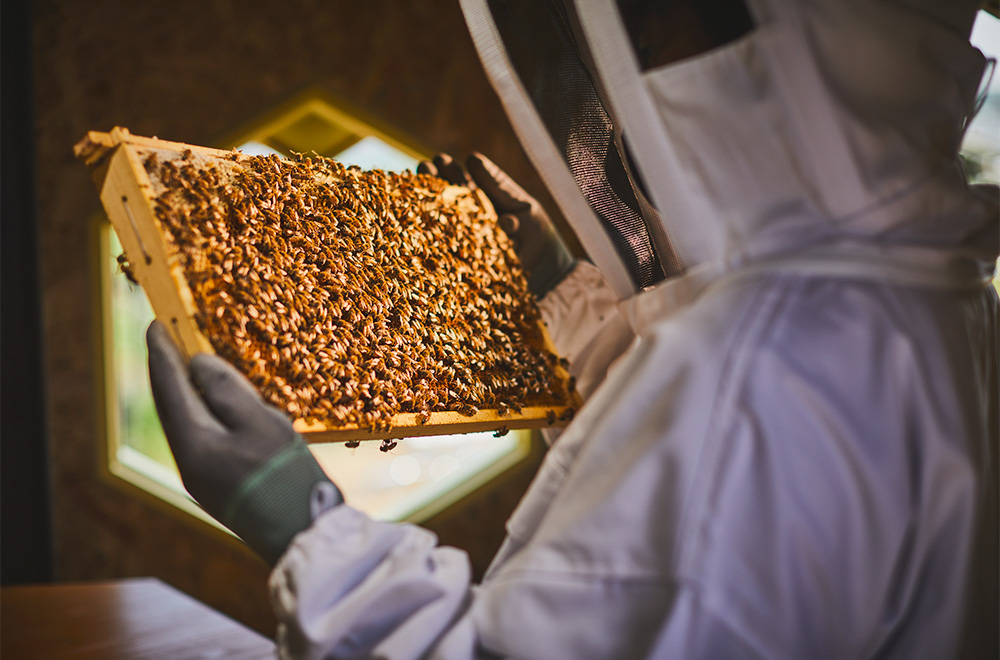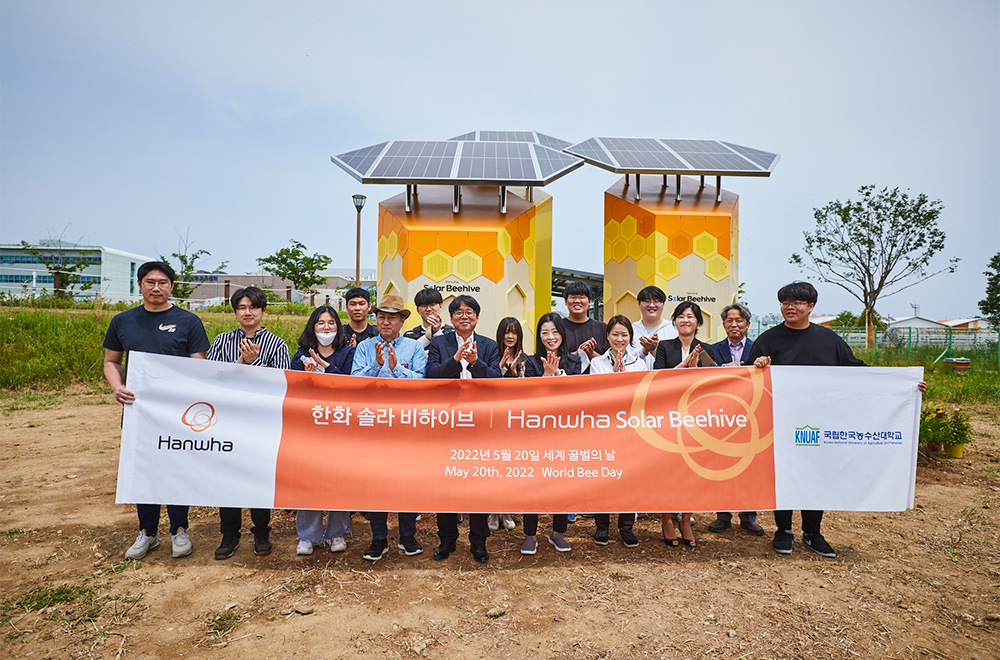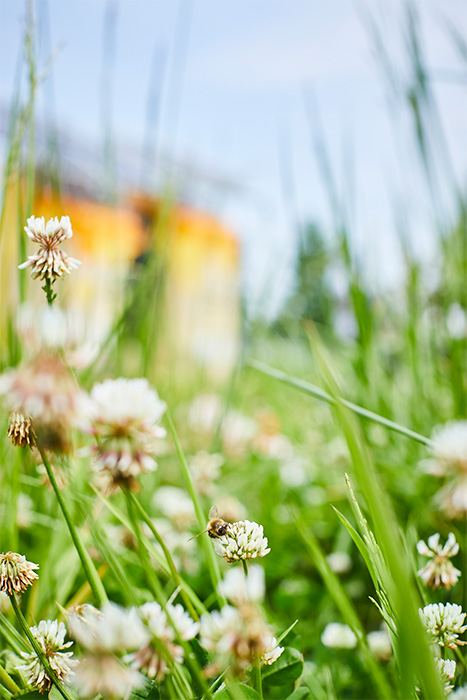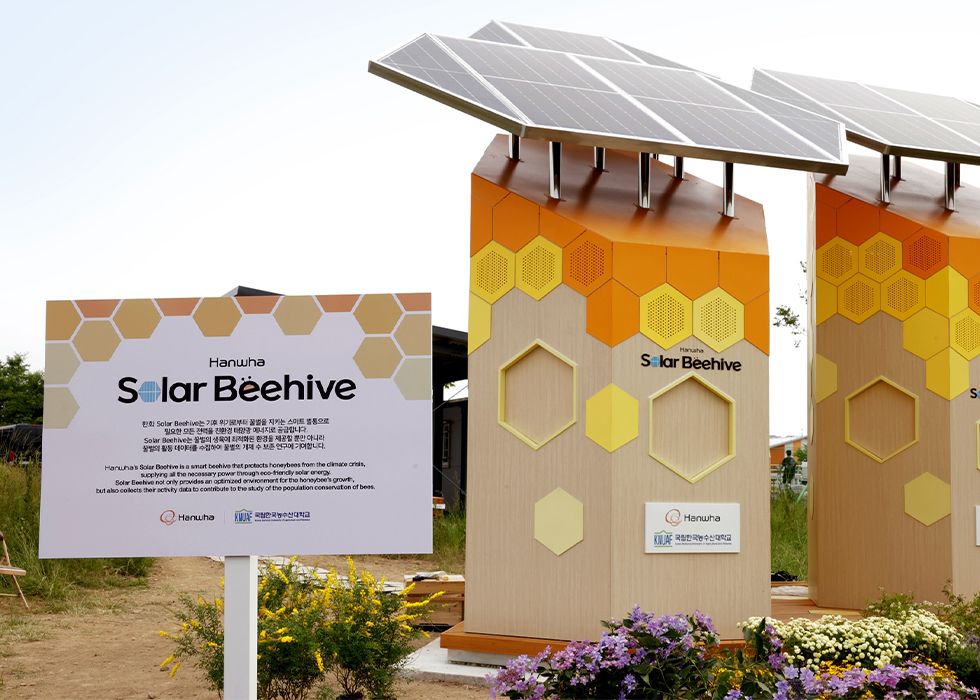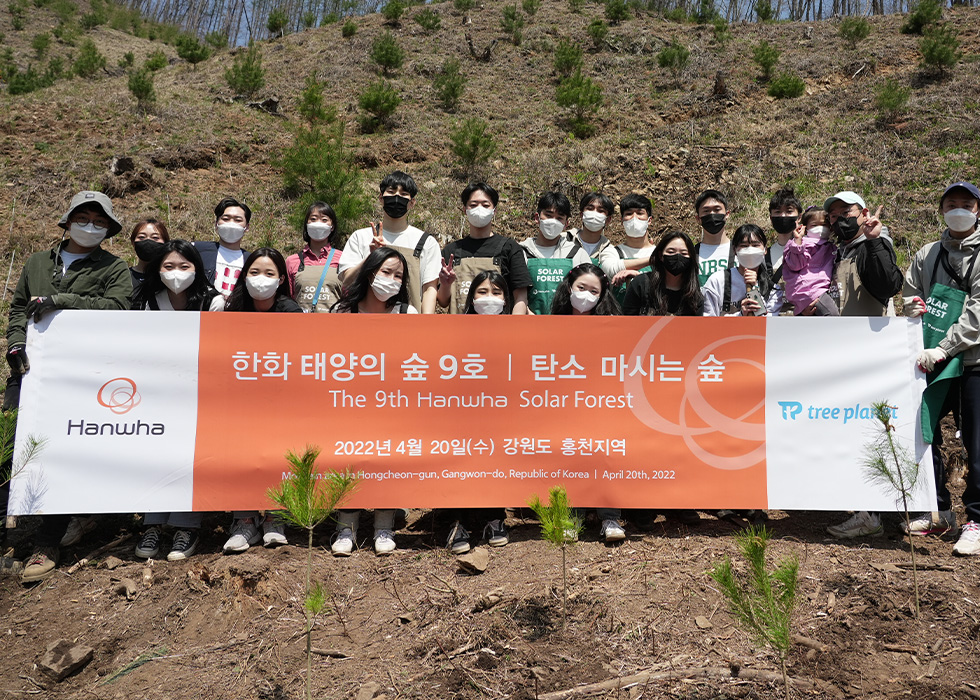Connecting Hives, Connecting Lives: How Saving Bees with Solar Panels Protects Pollinators, People and the Planet

If you’ve ever taken a crisp bite of an apple or started your day with a steaming mug of coffee, you have one thing to thank — bees.
Why are bees important? After 120 million years of evolution, bees have become the world’s most important pollinators. In fact, one-third of the world’s food supply — or one out of every three bites of food we eat — relies on bees. And according to the Food and Agriculture Organization of the United Nations (FAO), without bees, we wouldn’t have foods like apples, almonds, tomatoes and coffee in our grocery stores. Bees are even essential for pollinating the plants used to feed livestock, so they’re essential for meat and dairy products.
Pollination is a fundamental process for the survival of our ecosystems. Humanity itself, from the environment we live in to the food we eat, depends greatly on our fuzzy friends. However, bees are increasingly threatened by climate change and other human activities, and declining bee populations pose a serious threat to global food security and nutrition.
On May 20, 2022, designated by the United Nations (UN) as World Bee Day, Hanwha unveiled Korea’s first-ever Solar Beehive, a low-carbon smart beehive that uses electricity generated from solar energy, to help restore the bee population and preserve biodiversity. By encouraging bees to pollinate trees, flowers and other plants that absorb carbon emissions, Hanwha is responding to the negative effects of climate change. Now more than ever, these eco-friendly projects are important for ensuring that we all benefit from a better and brighter tomorrow. Hanwha is doing its part to preserve our planet — down to its tiniest black and yellow creatures — for humanity’s future generations.
Read on to learn more about why bees are essential to our ecosystem and how saving the bees is key to saving our future.
The Bee in Biodiversity
So what is biodiversity, and why is it important? Biodiversity is defined as all the different kinds of life on Earth, or the variety of animals, plants, fungi and even microorganisms like bacteria that make up our natural world. These species and organisms work together in ecosystems to maintain balance and support life. Essentially, biodiversity is the living fabric of our planet that supports everything in nature that we need to survive, from food and clean water to medicine and shelter.
Bees and pollinators in general — like birds, bats and butterflies — help regulate the health of our ecosystem every day, and in this way, also work toward preserving biodiversity. Nearly 90% of all wild flowering plants depend at least to some extent on animal pollination. However, as humans put increasing pressure on the planet by using and consuming more resources than ever before, we risk upsetting the balance of these ecosystems.
One such consequence is the loss of variety and the decreasing population of bees. Though small in size, these black and yellow insects make a huge impact. Honey bees — wild and domestic — perform about 80% of all pollination worldwide, and a single bee colony can pollinate 300 million flowers each day. Seventy out of the top 100 human food crops — which supply about 90% of the world’s nutrition — are pollinated by bees. Pollination not only makes food available for other organisms, but also allows plants to grow and provide habitats for animals, including other insects and birds.
Bees play a vital role in keeping our planet’s complex ecosystems growing and thriving. When the population of bees is threatened, so too is the health of our environment.
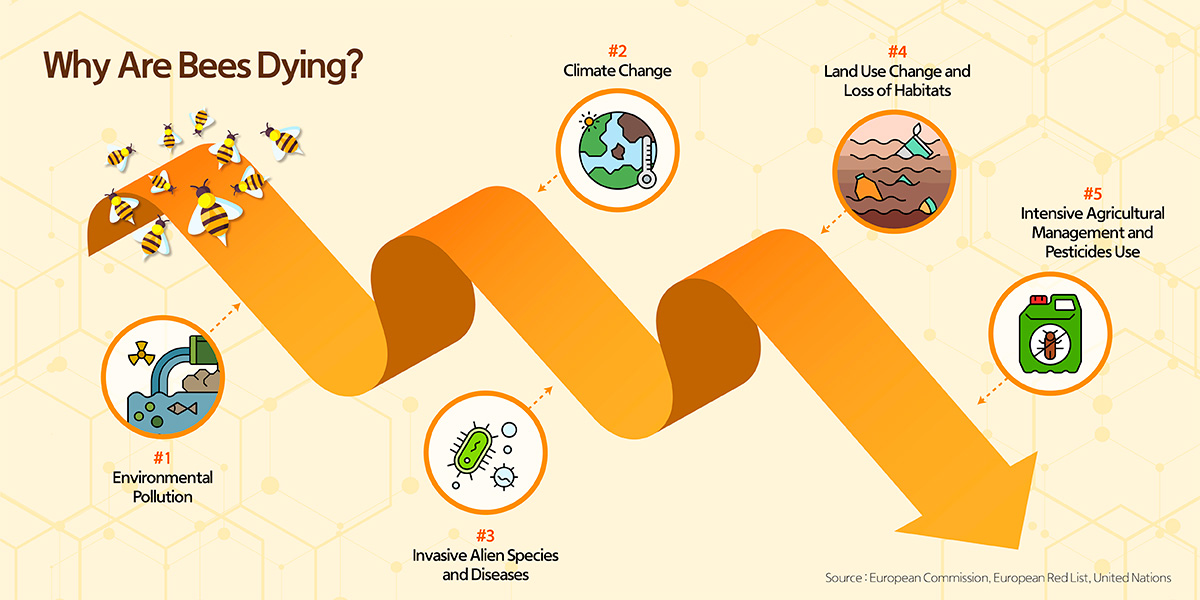
Colonies in Collapse
Data shows that the bee population has been experiencing mass seasonal die-offs in North America, Europe, and parts of Asia. A survey of commercial beekeepers showed that 50 billion bees — more than seven times the world’s human population — were wiped out in a few months during winter in 2018 and 2019 in the U.S. Recent studies have also found that bee species diversity has been declining as well. Scientists can attribute the loss of bees to a variety of factors, including pesticides, parasites, drought, habitat destruction, nutrition deficit, air pollution, global warming and more. There’s no straightforward source of the decline, as many of these causes are interrelated. However, scientists also know that humans are largely responsible for the two most prominent causes of bee population decline: pesticides and habitat loss.
For bees, habitat loss is not only about the physical space they need to live, but also the range of plant species available for their food supply. Climate change makes it more difficult for plant species to thrive, severely limiting the quantity and variety of food available for bees. What’s more, as average temperatures rise around the globe, flowers may bloom weeks or months earlier than usual and for shorter periods. Bees, who have adapted to a particular pattern of pollen and nectar availability, can be seriously affected by even minor changes to seasonal plant growth. Rising temperatures can even lower bees' body weights, making them more vulnerable to infections or parasites and weakening their colonies. Climate change is certainly bad news for bees, which is why we must consider the harmful effects of climate change as we explore potential solutions.
Of course, the bee decline isn’t an isolated incident. The collapse of honeybee colonies has been going on for years. U.S. National Agricultural Statistics show a decline from about 4.5 million hives in 1968 to 2.8 million hives in 2019, a 40% reduction, and these declines are not limited to a single area.
The world also saw a drastic decrease during the winter of 2006 and 2007, as some beekeepers began to report unusually high losses of 30 to 90% of their hives. Dubbed Colony Collapse Disorder (CCD), this phenomenon occurs when a critical proportion of bees in a hive die early, making the colony unable to sustain itself, leaving behind a queen, food and a few nurse bees to care for the remaining immature bees. Overall, humans are altering the planet’s delicate web of life, and in effect, we’re creating problems that severely impact our native pollinators.
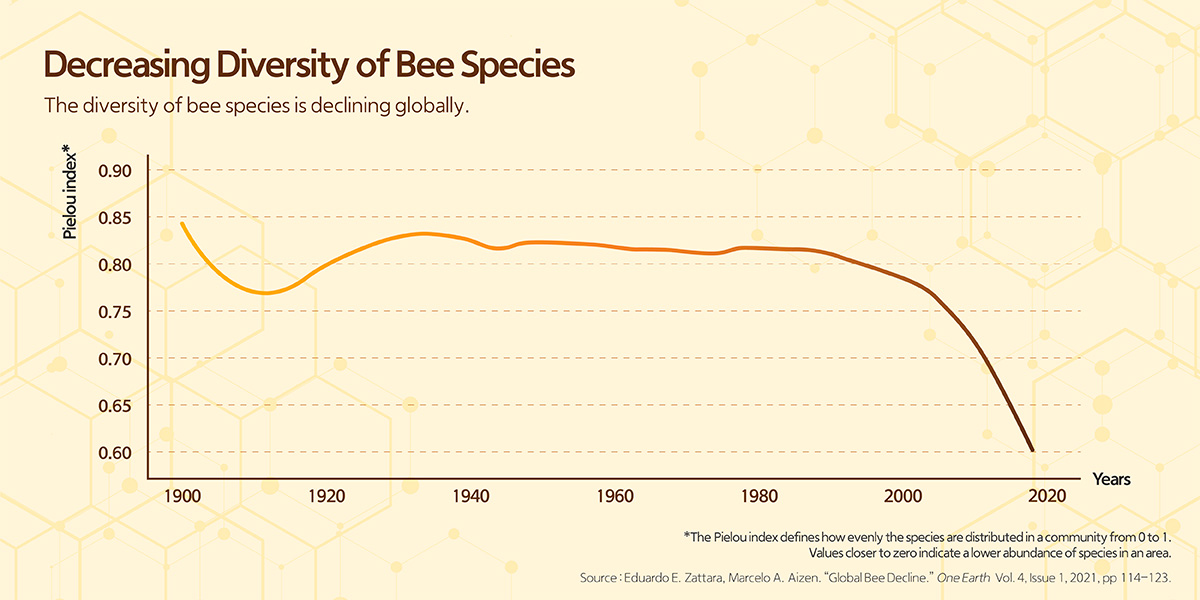
A World Without Bees
Where would the world be without bees? If the species disappeared entirely, their extinction would have a harsh sting. Not just an environmental issue, a total absence of bees would also carry devastating implications for agriculture, economic stability and global security.
If honeybees died out, thousands of plants would follow, severely impacting the world’s natural food chains. The loss of bees would effectively change the entire food system. Without bees and other pollinators, supermarket shelves would hold about half the fruits and vegetables they have now. There will be no more apricots, coffee, strawberries, beans, kiwis, apples or almonds, just to name a few crops. What’s more, the prices of the remaining fruits and vegetables, in general, would skyrocket. Overall, this could lead to nutritional deficiencies in the human diet, as many of these products are essential sources of vital nutrients. Even the plants used for feeding livestock, like alfalfa, would also diminish, reducing our global supply of milk and meat. Of course, plants could be pollinated by hand (or, in the future, by drones), but these alternatives would be pricey and inefficient compared to letting nature’s pollinators do the work.
Habitats would erode and have a rippling effect on everything from the quality of our soil to the beauty of flowers in nature. Even our clothing supply chain would be affected, as bees contribute to pollinating cotton, so more clothing may be made from alternatives like polyester. Additionally, all medicinal and cosmetic products that use ingredients from honeybees, that is, honey, bee pollen, propolis, royal jelly, beeswax and bee venom, would no longer exist without the bees to produce them. The bottom line? If bees go, our way of life goes with them.
Bee the Solution
To prevent honeybees from becoming endangered or extinct, many companies and institutions worldwide are working to bring the bees back, raising awareness of their importance and working to create environments to help bees thrive.
For instance, to raise awareness of the importance of pollinators, the threats they face and their contribution to sustainable development, the UN designated May 20 as World Bee Day. Another example is Bees for Development, an international organization in the U.K. that uses beekeeping as a tool to alleviate poverty and retain biodiversity around the world. The Bee Conservancy in the U.S. is dedicated to protecting bees and securing food justice through education, research, habitat creation and advocacy.
Even individuals can help save the bees in various ways, like planting a bee garden with native plants that are rich in pollen and nectar, or stopping the use of synthetic pesticides when treating gardens and green spaces. Other at-home solutions include filling a shallow bird bath or bowl with clean water to create an outdoor bee bath, buying locally-made honey and beeswax products from beekeepers and choosing organic products from your local store or farmers’ market.
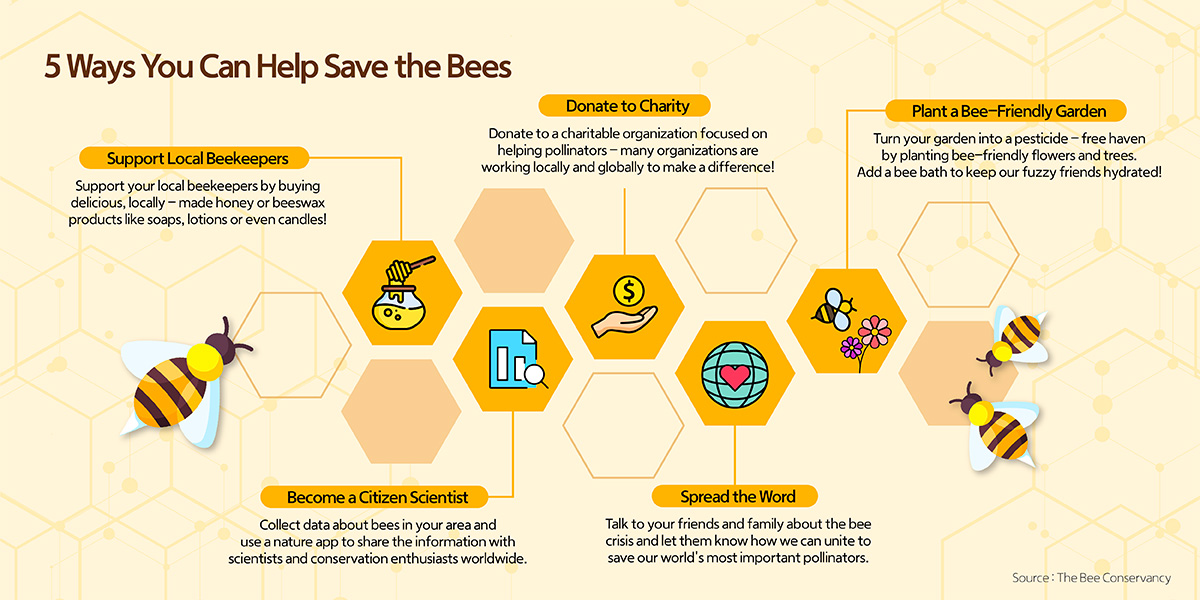
Now more than ever, it’s vital that everyone does their part to help protect the world’s most important pollinators — including Hanwha.
Hanwha’s Solar Beehive
One way to protect our world’s pollinators is by giving honey bees a home, which is exactly what Hanwha is doing at Korea National University of Agriculture and Fisheries (KNUAF). Donated to the university as part of a pilot program, Hanwha’s Solar Beehive uses solar power to create a safe and stable habitat to support bee population growth. The Solar Beehive consists of four smart internal beehives, which can in total house up to 40,000 bees, and an external structure that generates electricity from solar photovoltaic (P.V.) panels. On average, the solar panels will generate more than 10 kWh of electricity per day, reaching a maximum of 15 kWh per day in summer. The produced solar energy is used to automatically monitor and control the temperature, humidity, water and food inside the beehive, which can also detect and protect against the presence of hornets.
These thousands of bees will help pollinate the fruit trees on campus and vegetation in nearby forest areas. More importantly, the program will collect data on bee population growth and activities that will educate university students and further research on bee conservation. Data like the beehive’s internal humidity levels, internal carbon dioxide levels, external temperature, weight, number of wasps intrusions and amount of food activity will all be an important starting point to prevent bees from extinction. After all, the more we learn about bees and teach others about their importance, the more likely we are to save them.
In line with its vision for sustainability and to help achieve the UN’s Sustainable Development Goals, Hanwha is using green technology to address the negative effects of climate change and save the bees. Bees are vital to the growth of trees, flowers and other plants that absorb carbon emissions. While there is still a way to go before the bee population decline is solved, Hanwha is beelining toward a solution that can help scientists understand how bees are threatened and define the steps we can all take to stop it.
At the same time, Hanwha is also investing in companies that positively impact society and the environment, particularly in areas that explore solutions to the global food crisis. For instance, Hanwha recently invested in Inari Agriculture, an AgTech firm developing seeds that use fewer resources, New Age Meats, a biotechnology company developing cultured meat and Finless Foods, a cell-cultured seafood company.
One Hive at a Time
Humanity operates in one big, interconnected ecosystem, and every day, we rely on the pollination from bees to keep that ecosystem going. As the bee population declines, so too does our planet’s overall health. All the more so, we must find new and innovative ways to protect these important insects and preserve the balance of our ecosystem. Hanwha will work towards its vision of sustainability and create a better tomorrow for every living being on the planet — no matter how small. While we can’t fix the bee crisis overnight, we should all do our part to save the bees, one hive at a time.
Get the latest news about Hanwha, right in your inbox.
Fields marked with * are mandatory.
- Non-employee
- Employee


